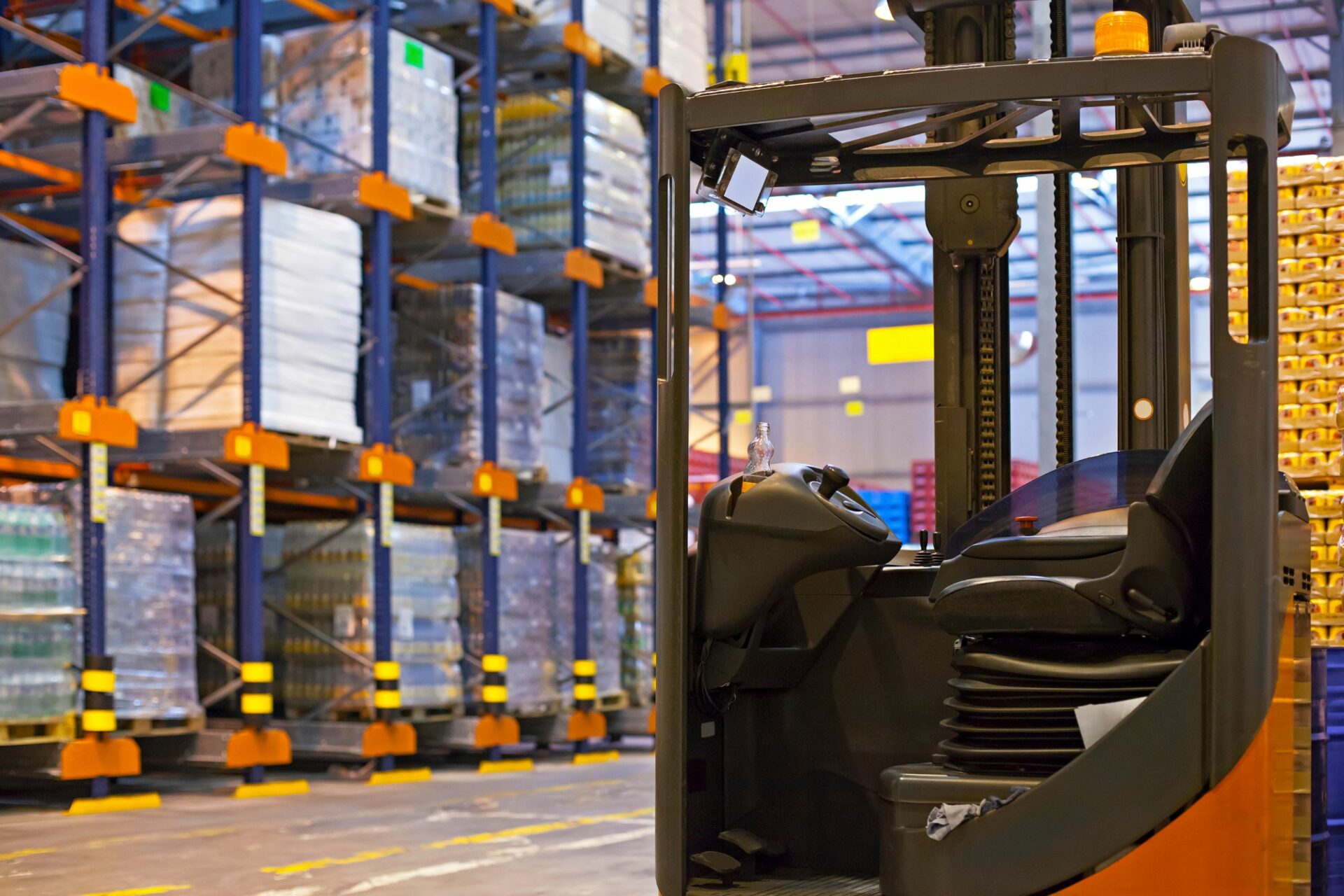Material Handling is covered in OSHA General Industry Codes 1910 subpart N and OSHA Construction codes 1926 subpart H. It is important to know the hazards associated with material storing and handling. It is also important to be able to identify types of material handling equipment and methods to prevent hazards associated with material handling.
Storing Materials
First, we’ll cover storing materials. The first thing to know about storing materials is that the materials themselves should not create a hazard. Some basic precautions to take when storing materials include, but are not limited to the following:
- Ensure materials stored in tiers are blocked, interlocked, and limited in height so they are stable and secure against falling, sliding, or collapse.
- Store all materials on pallets to discourage rodent infestation, and immediately clean up spills and leaks that create a rodent habitat.
- Emergencies could become disasters if exit, fire alarms, power switches, sprinklers, light switches, etc., are blocked – even temporarily:
- Employees shall not block emergency access or equipment
- Aisles and passageways must be kept clear of obstructions and slip, trip, and fall hazards
- A 36-inch clearance shall be maintained around emergency equipment and the emergency equipment shall be clearly marked
- Do not store materials in excess of supplies needed for immediate operations in aisles/passageways
- Employers shall mark permanent aisles and passageways
- Obstructions in aisles (e.g. columns, posts, etc.) shall be clearly marked
- Doors shall be of sufficient height and width to accommodate material handling equipment
- Aisles shall be 2 feet wider than the widest vehicle used
- Exit access aisles in storage areas shall be at least 44 inches wide
- There must be enough operating space for handling and stacking materials safely in all storage areas
Hazards associated with material handling
Moving material occurs in a few ways. The primary ways include:
- Moving by hand
- The use of hand trucks and carts
- Mechanically through the use of conveyors, slings, cranes, or powered industrial trucks (forklifts).
A variety of tools/equipment are used to move, store, use, and dispose of materials. For example, in general industry workplaces, the following operations may exist: hoisting materials with a crane, driving a truck loaded with products that may be hazardous due to physical or chemical characteristics, manually carrying bags or other types of containers filled with materials, and stacking drums, barrels, kegs, boxes, or loose items/products. Factors that contribute to workplace injuries include Lifting, pushing, pulling, or otherwise manually moving large, heavy items, Weight and bulkiness of objects Bending, twisting, and turning movements, falling objects, and Struck-by or caught-in/-between hazards which we did a previous blog about. Common injuries include everything from sprains, strains and tears to cuts, lacerations, and punctures to slips, trips and falls.
Preventing Hazards
So, this brings us to the most important part which is being able to prevent hazards. There are some things we can do to help prevent hazards:
- Use devices to assist with holding loads
- Wear PPE
- Use proper lifting technique
- Seek help for oversized loads
- Use blocking materials
- Mechanical handling aids can be used to lift heavy or awkwardly shaped loads
- When a mechanical aid is not available, seek help for oversized loads
If using overhead or gantry cranes:
- Never move a load over co-workers or allow coworkers to walk underneath
- Return the load block to its designated location after use
- Do not leave the load block low enough for someone to run into
- Never leave a suspended load unattended
- Cranes should be operated only by trained
and qualified workers - Store wall-mounted cranes against the wall
- Continuously observe equipment for any sign of problems during operation
- Don’t allow yourself to become distracted
- Do not leave unused slings suspended on a crane hook
- Always know load capacities
When working with conveyors
- Install an emergency button or pull cord designed to stop the conveyor at the employee’s workstation
- Install emergency stop cables that extend the entire length of continuously accessible conveyor belts so that the cables can be accessed from any location along the conveyor
- Design the emergency stop switch so that it must be reset before the conveyor can be restarted
- Ensure that appropriate personnel inspect the conveyor and clear the stoppage before restarting a conveyor that has stopped due to an overload
- Prohibit employees from riding on a materials-handling conveyor
- Provide guards where conveyors pass over work areas or aisles to keep employees from being struck by falling material
- If the crossover is low enough for workers to run into it, mark the guard with a warning sign or paint it a bright color to protect employees
When working with slings
- Remove immediately damaged or defective slings from service
- Do not shorten slings with knots or bolts or other makeshift devices
- Do not kink sling legs
- Do not load slings beyond their rated capacity
- Keep suspended loads clear of all obstructions
- Remain clear of loads about to be lifted and suspended
- Do not engage in shock loading
- Avoid sudden crane acceleration and deceleration when moving suspended loads
- Ensure slings have been inspected prior to use
- Use straps, sideboards, nets, or other suitable devices to ensure the materials and loads are fully secured against falling
There’s definitely a lot more to cover that we don’t have time for in this article. However, for a fully comprehensive training program, consider our DIY in-house training kit or our online training options. Don’t hesitate to give us a call with any questions. We are always happy to help.
Call 866-627-3850 or email sales@jjsafetyllc.com to learn more.
